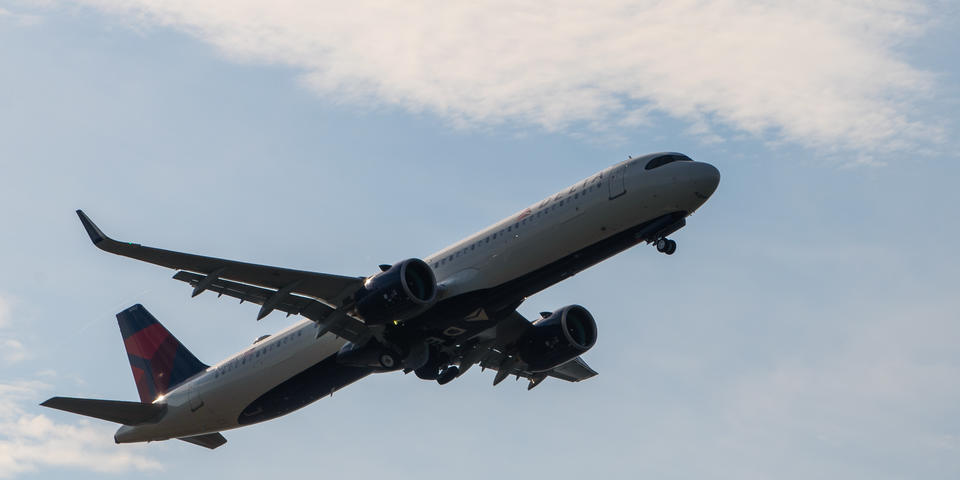Delta, Shell Aviation SAF agreement to fuel LAX hub and accelerate aviation decarbonization
Delta will purchase up to 10 million gallons of neat SAF from Shell Aviation over a two-year period for use at its hub at Los Angeles International Airport. This will increase the global airline’s SAF commitments to over 200 million gallons – more than halfway to its goal of SAF comprising 10% of its fuel use annually by end of 2030*, and well on its way to 35% SAF use by 2035.

- 10 million gallons of neat SAF to be supplied by Shell Aviation to Delta across two years for use at LAX, moving Delta one step closer to achieving 10% SAF usage by end of 2030.
- Agreement includes testing Avelia platform to bring greater transparency to tracking and accounting companies’ carbon footprint from flying.
Delta is making another multi-million-dollar commitment in sustainable aviation fuel on its quest to scale what is widely considered the airline industry’s largest proven decarbonization lever.
Delta will purchase up to 10 million gallons of neat SAF from Shell Aviation over a two-year period for use at its hub at Los Angeles International Airport. This will increase the global airline’s SAF commitments to over 200 million gallons – more than halfway to its goal of SAF comprising 10% of its fuel use annually by end of 2030*, and well on its way to 35% SAF use by 2035. Delta’s ambitions complement those of Shell, which aims to be a net-zero emissions energy business by 2050.
“There isn’t enough SAF available today to fuel the world’s commercial airlines for a single day,” said Pam Fletcher, Delta’s Chief Sustainability Officer. “That’s why Delta continues creating demand signals like this arrangement with Shell – to show this major decarbonization lever is worth investing in and growing. We can have a huge impact in just a few years if stakeholders and government work together to provide the same level of investment and incentives currently available for the fuel that runs our cars.”
Delta’s LAX hub will receive the blended SAF thanks to California’s long-standing low carbon fuel standard that provides incentives for producers to provide SAF to the state. Other states are now exploring similar SAF programs and tax incentives to complement federal policies that encourage the investment in and scaling of SAF.
SAF’s power is threefold:
- The lifecycle carbon emissions of producing neat SAF is up to 80%1 less than that of traditional jet fuel. And in some cases, like with SAF partner Gevo, producing SAF contributes to lowering the carbon footprint of agriculture, too.
- It’s a safe, fully certified “drop-in fuel” that meets ASTM Jet A specifications, which means it can be transported using the existing fuel infrastructure to airports. Delta was a key player in proving this in 2022.
- Neat SAF can be blended with conventional jet fuel and used in today’s aircraft engines – no modifications needed – at a ratio of up to 50%. Delta has been a leader in proving the technology through SAF engine tests at its state-of-the-art engine test cell in Atlanta.
Jan Toschka, President of Shell Aviation, added: “It’s brilliant to see Delta prioritize SAF, helping them to reduce lifecycle emissions while providing the demand that will help unlock further SAF production and scale supply. This marks another important development for the future of sustainable aviation, as ambitious offtake agreements like this can hold the key to driving the airline industry’s transition toward a more sustainable future.”
Delta’s commitment to transparency across its business includes sustainability. That’s why the agreement also includes Delta testing the tracking of Shell SAF delivery and its use data through Avelia